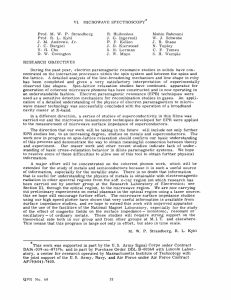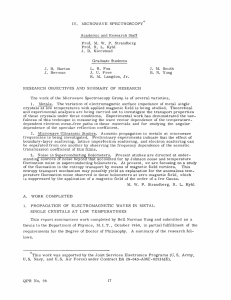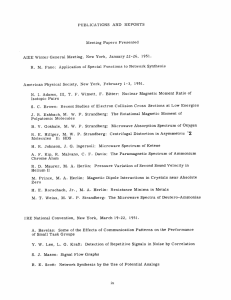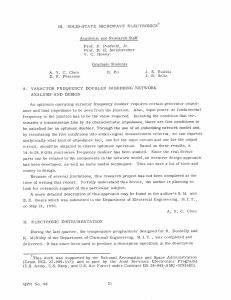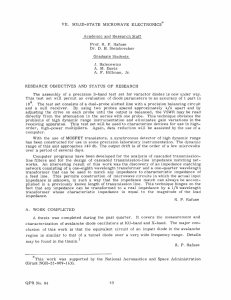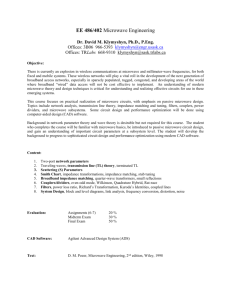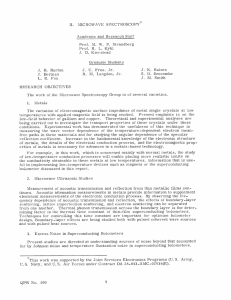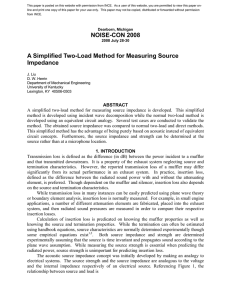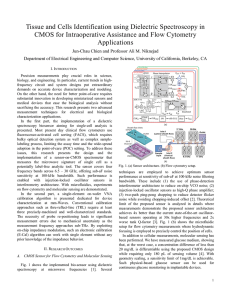IV. MICROWAVE SPECTROSCOPY Academic and Research Staff
advertisement
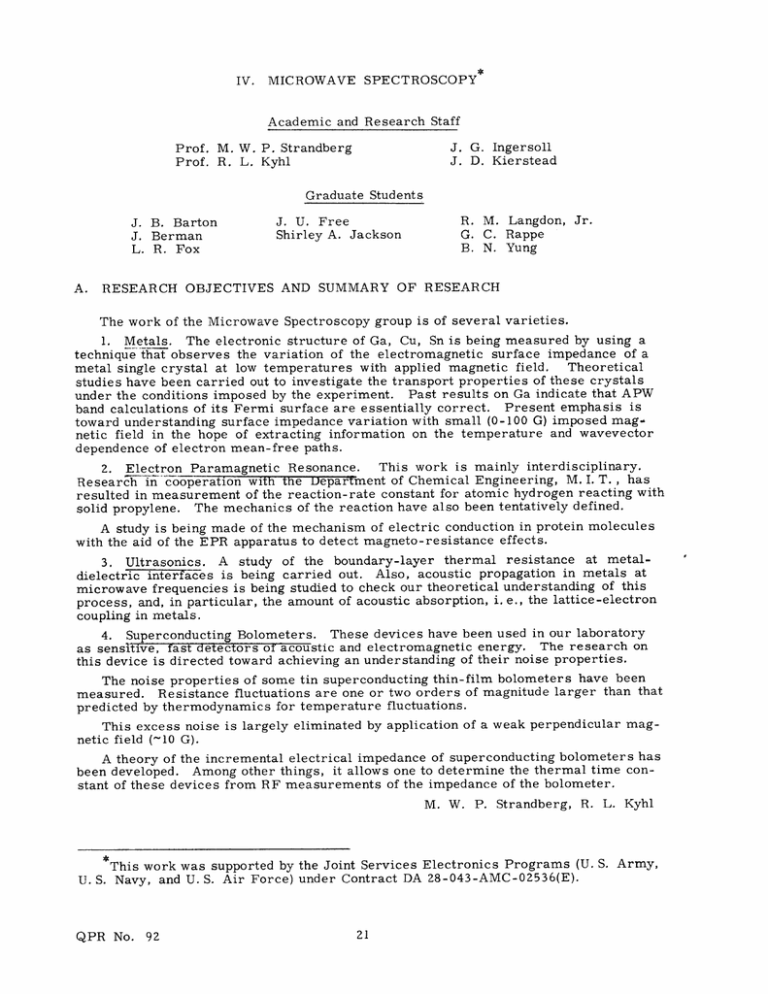
IV. MICROWAVE SPECTROSCOPY Academic and Research Staff Prof. M. W. P. Strandberg Prof. R. L. Kyhl J. G. Ingersoll J. D. Kierstead Graduate Students J. B. Barton J. Berman L. R. Fox A. J. U. Free Shirley A. Jackson R. M. Langdon, Jr. G. C. Rappe B. N. Yung RESEARCH OBJECTIVES AND SUMMARY OF RESEARCH The work of the Microwave Spectroscopy group is of several varieties. 1. Metals. The electronic structure of Ga, Cu, Sn is being measured by using a technique that observes the variation of the electromagnetic surface impedance of a Theoretical metal single crystal at low temperatures with applied magnetic field. studies have been carried out to investigate the transport properties of these crystals under the conditions imposed by the experiment. Past results on Ga indicate that APW band calculations of its Fermi surface are essentially correct. Present emphasis is toward understanding surface impedance variation with small (0-100 G) imposed magnetic field in the hope of extracting information on the temperature and wavevector dependence of electron mean-free paths. This work is mainly interdisciplinary. 2. Electron Paramagnetic Resonance. Research in cooperation with the Department of Chemical Engineering, M. I. T., has resulted in measurement of the reaction-rate constant for atomic hydrogen reacting with solid propylene. The mechanics of the reaction have also been tentatively defined. A study is being made of the mechanism of electric conduction in protein molecules with the aid of the EPR apparatus to detect magneto-resistance effects. 3. Ultrasonics. A study of the boundary-layer thermal resistance at metaldielectric interfaces is being carried out. Also, acoustic propagation in metals at microwave frequencies is being studied to check our theoretical understanding of this process, and, in particular, the amount of acoustic absorption, i. e., the lattice-electron coupling in metals. 4. Superconducting Bolometers. These devices have been used in our laboratory as sensitive, fast detectors or acoustic and electromagnetic energy. The research on this device is directed toward achieving an understanding of their noise properties. The noise properties of some tin superconducting thin-film bolometers have been measured. Resistance fluctuations are one or two orders of magnitude larger than that predicted by thermodynamics for temperature fluctuations. This excess noise is largely eliminated by application of a weak perpendicular magnetic field (~10 G). A theory of the incremental electrical impedance of superconducting bolometers has been developed. Among other things, it allows one to determine the thermal time constant of these devices from RF measurements of the impedance of the bolometer. M. W. P. Strandberg, R. L. Kyhl *This work was supported by the Joint Services Electronics Programs (U. S. Army, U. S. Navy, and U. S. Air Force) under Contract DA 28-043-AMC-02536(E). QPR No. 92
